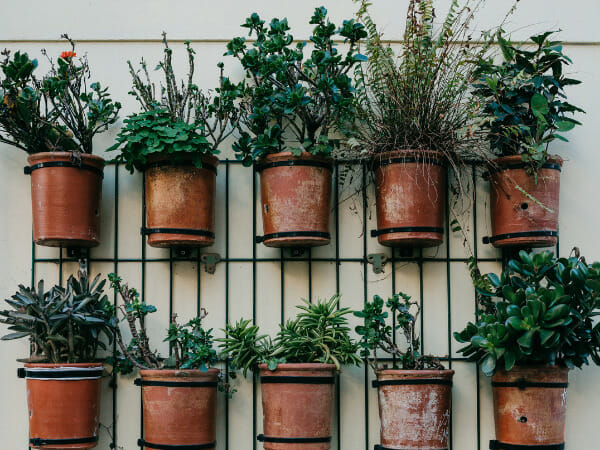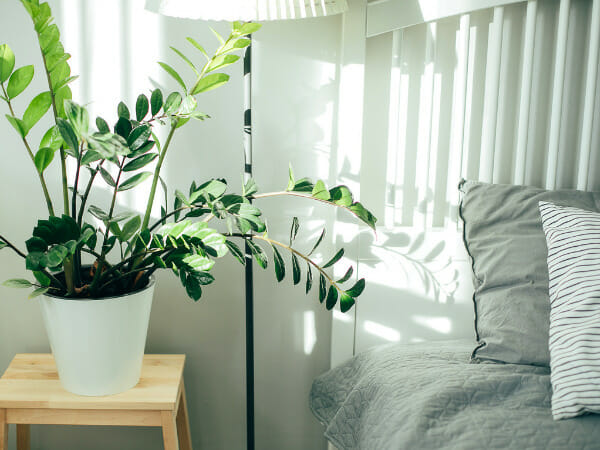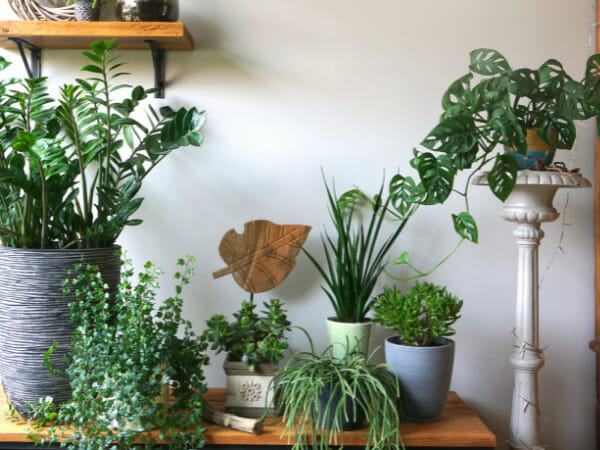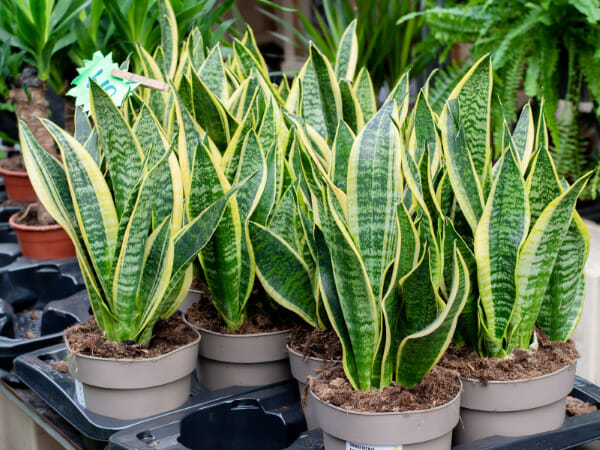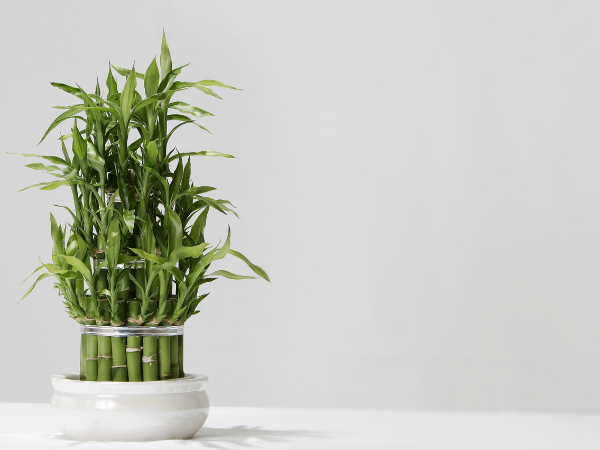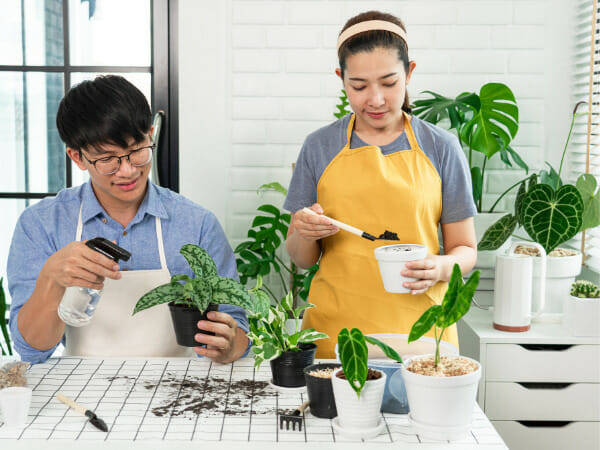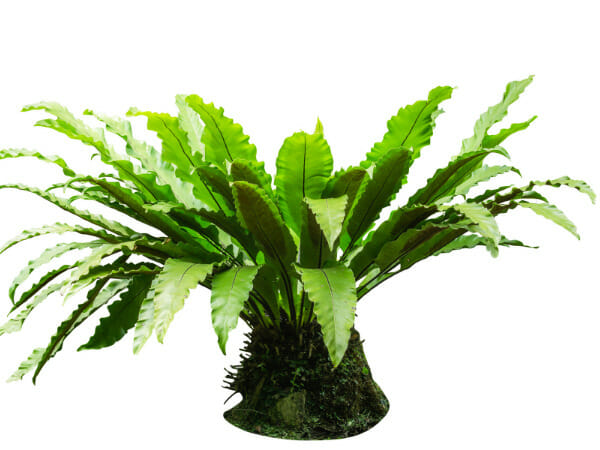The Best Houseplants for Every Experience Level
Houseplants couldn’t be trendier these days. Because not only are they low maintenance and visually beautiful, but they are also good for your health.
While outdoor gardening can be satisfying, not everyone has room for outdoor plants, but anyone can grow the best indoor house plants, even in their bedrooms. It’s the perfect plant because it can grow even in a humid environment and requires minimal care. Some plants only need a sunny window, and others, only demand a source of indirect light.
Choosing the perfect indoor plant may be overwhelming because there are many options – tropical plants, succulent plants, air plants, hanging plants, and so much more. Houseplants may also be intimidating to those who fear commitments or don’t have a green thumb (Especially the black thumbs who usually prefer fake plants and flowers more than anything.)
However, even if you don’t consider yourself a plant enthusiast or you are a first-time plant parent, there are plenty of low-maintenance indoor plants that you can choose from.
If you want to add life and color to your space by having a house plant but don’t know how to begin and which ideal plant to pick, you’ve come to the right place because we researched the best plants for indoors based on different experiences levels and environments.
What Are House Plants Used For?
Indoor houseplants don’t only look good. They make us feel good too.
Houseplants are not only used for their visual beauty. Studies show that it’s excellent for your health too. Indoor plants keep us healthier and happier because they offer many usages and offer both physical and psychological benefits.
There are a lot of reasons why all of us are obsessed with indoor plants.
1. Displaying houseplants is an inexpensive way to spruce up even the most boring rooms
Whether you want to jazz up your space or add a warm relaxing vibe to your home, placing the best indoor plant is great!
Indoor plants are low-maintenance plants that can be an attractive way to style up your living space. Enhance your sunny windowsill appearance with succulents, place a rubber plant on a bare table, drape vibrant bird’s nest fern hangers from curtain rails, hang prayer-plants on the wall, fill any corner with peace lilies, display one spider plant in a hanging basket, improve a space with a jade plant, or try something bold like placing big and gorgeous snake plants. Have fun with pots and display your plants in beautiful copper and ceramic containers.
Owning a house plant doesn’t have to be expensive. You can take a cutting from a friend’s plant and propagate it from scratch.
2. Indoor plants make your place even more comfortable
Aside from adding liveliness and vibrance to a space, they transform the effects of the surroundings in delightful ways. Adding more green and luscious leaves, especially to a humid room, can be the best way to create a calming environment and freshen up your place.
House plants increase the humidity indoors. Best indoor plants can also reduce noise and improve the temperature of any room by screening unpleasant areas while acting as a shade in a sunny window. Before filling your home with different fixtures and movables, decide what kind of vibe you want and how the greenery can give you the feeling you want to achieve.
3. Bedroom house plants for the optimal night’s sleep
If you find yourself turning or tossing every night, maybe your environment isn’t conducive to sleep. However, several indoor plants can help you get the best sleep ever.
Some plants work better in the bedroom than others— their air-purifying properties, calming scents, and low maintenance make them winners for helping you get the quality snooze time faster.
Most indoor plants release oxygen during the day. When photosynthesis stops at night, most plants release carbon dioxide. However, some plants do the opposite and emit oxygen at night making them perfect bedroom plants and getting better sleep.
Here are some of the house plants to consider keeping in your room to induce sleep:
- Snake Plant
- Orchids
- Succulents
- Bromeliads
- Peace Lily
- Aloe Plant
4. They’ll make you feel accomplished
A study from the American Society for Horticultural Science shows an improvement in the quality of life of the assisted-living facility residents of potted plants. They felt accomplished and fulfilled when they learned about plant care and how the plants thrive. By taking ownership and doing it yourself, you will exude pride and accomplishment.
5. Houseplants are used to boost productivity
The Journal of Environmental Psychology published a study about attention capacity in an office setting. It proved that students who performed demanding cognitive tasks in an office with indoor plants had a longer attention span than those in the same environment without plants.
Plants are vital for human survival, but there is also an innate connection to them because of the reduced stress and its effects on an individual’s ability to focus on tasks.
So the next time you are thinking of having a brain boost at work, don’t forget to place a house plant or a succulent on your desk.
What are the benefits of house plants?
Most people love having a beautiful indoor plant around. Many also enjoy working and living in cultivated green spaces. But there is more to it than you’ll ever know. Here are the benefits of working and living with indoor plants.
Indoor plants may lower your stress
The Journal of Physiological Anthropology found that participants reduced their physiological and psychological stress through active interaction with house plants compared to mental work.
In this study, participants accomplished two tasks: a short computer-based assignment and house plant repotting. The researchers gauged the biological factors connected with stress, including blood pressure and heart rate. The results show that the indoor gardening task lowered the stress response. In comparison, the computer task caused a spike in the blood pressure and heart rate even if these participants were used to computerized work.
They concluded that working and living with plants could reduce stress, and having a plant in your office or home makes you feel more soothed, comfortable, and natural.
Houseplants improve your performance and sharpen your focus
Did you know that plants may help you pass your exams?
A small study published by the International Journal of Environmental Research and Public Health concluded that the visual stimulation of natural indoor plants improved the attention and comfort of elementary students. The researchers placed participants with either a real indoor plant, a fake one, a picture of it, or no plant.
The participants had brain scans which revealed that the students who studied with real indoor plants in the classroom could concentrate better and were more attentive than the respondents in other groups.
Working and living with plants may be therapeutic
Mental health patients find indoor gardening helpful with their conditions. A study entitled Horticultural therapy in a psychiatric in-patient setting from the National Library of Medicine has shown that patients experiencing mental illness symptoms used horticultural therapy to develop their feeling of well-being whenever they experience dementia, anxiety, depression, and other conditions.
This therapy has been utilized for many years now, but many clinics already prescribe the best indoor plants to patients battling anxiety or depression.
Best indoor plants boost healing and pain tolerance
Looking at house plants may help you recover from an injury, an illness, or surgery faster.
The research made by Dr. Roger S. Ulrich entitled Health Benefits of Gardens in Hospitals demonstrated that people recuperating from surgeries of different kinds had short hospital stays and required lesser pain medication than patients who weren’t exposed to the greenery during their period of recovery.
The study was conducted in a hospital setting and not at home, but it focused on the natural scenery and many plants.
Houseplants improve the indoor air quality
Whether working, sleeping, eating, or binging Netflix, we spend approximately 90 percent of our time indoors, based on a study conducted by the Environmental Protection Agency. Since most of the time is spent inside our living spaces, we are more exposed to indoor air pollution.
Indoor plants can be a more harmless addition to air filtration. One of the benefits that the best indoor plants give is that it returns oxygen and removes carbon dioxide. Not only that, house plants can also remove toxic substances from the soil, air, and water in different ways:
- They metabolize chemicals that are very toxic to the body and they release safe by-products
- They can merge toxicants like heavy metals into their tissues, thus removing them.
According to a study in the National Library of Medicine entitled Planting Healthier Indoor Air, the following are the best house plants to freshen the air naturally and effectively:
- Areca, Lady, Dwarf Date
- Bamboo Palms
- Boston Fern
- Rubber Tree
- Spider Plant
- Ficus Tree
What are the best houseplants for first-timers?
Are you an aspiring first-time plant parent? A low-maintenance plant that’s easy to grow requires minimal care and can grow in low light or indirect sunlight is suitable for beginners. When you witness frequent growth from your house plant, there will be a sense of accomplishment, inspiring you more as a first-timer. Of course, you want to see your effort paying off—fast.
You will undoubtedly be happy to have a house plant that looks beautiful without demanding so much of your attention and time. The best indoor plant for you is not sensitive and doesn’t suffer too many issues.
Below we take a closer look at some of the best houseplants for first-timers:
- Golden Pothos Vine
- Spider Plant
- Snake Plant
- Dracaena Species
- Succulents and Cacti
- Lucky Bamboo
- ZZ plant
Golden Pothos Vine
This meandering vine of heart-shaped leaves is very low maintenance and doesn’t need daily care. If you are a person who may regularly forget your house plant, this may be added to the list of your favorite indoor plants.
These plants thrive in hanging pots or trailing baskets, and they grow faster than others, even with minimal care. While a pothos likes bright light, it can do well in fluorescent lighting. They root easily in a simple glass of water.
They are also beneficial to your health because they remove toxic pollutants from the air, such as carbon monoxide, making the air safer to breathe. If you take care of it, large, mature, and mottled leaves may develop.
Spider Plant
Since it is a good communicator, it is considered a perfect plant for those who want to start taking care of plants. The tips of their leaves get brown when they need water. Their long leaves will look waterlogged and will flop due to over watering.
The lighter variegation or, the lighter shading of the leaves will become wider if they are exposed to a lot of direct sunlight. In contrast, the stripes of the plant get narrower or disappear when it is placed in low light. These plants grow in bright indirect light.
Snake Plant
They have a tremendous visual impact because of their dramatic and upwardly pointing angular leaves. Even if it is a beautiful plant, it is easy to care for. They can adapt to medium light or indirect light. It can also tolerate some direct sunlight and shade.
This plant improves the quality of your sleep because it produces oxygen throughout the day and night. It is one of the best plans for beginners because of one reason: It’s difficult to kill. A Snake plant can survive in almost low light.
Dracaena Species
This plant is one of the most known houseplants for beginners. It is mainly loved for its ornamental use because they grow in many surprising shapes and sizes. It has more than 100 varieties which gives you a lot of options. It is easy to grow and even easy to maintain. It enjoys soil moisture, and this plant can thrive in low to bright indirect light.
Succulents and Cacti
These can thrive on neglect. They are slow-growing and will withstand tremendous abuse. Succulents and Cacti are even drought-tolerant or can thrive in dry air. They do best with little water and bright light. Dozens of varieties of these can be found in groceries or garden shops. From small to larger ones, name it, they have it.
Lucky Bamboo
A perennial office plant, the Lucky Bamboo belongs to the dracaena species. This plant thrives in awful situations such as the absence of natural light and poor air quality. This is one of the reasons it is called ‘Lucky’ because it lives on and survives. Many people believe that this plant gives us good luck and enhances the energy of the surroundings.
ZZ Plant
If you are looking for an ultra-tough indoor plant, the ZZ Plant is the best choice. It is drought tolerant, and it barely notices low light conditions, but it prefers bright light and any well-draining soil. Unfortunately, even if this plant is easy to care for, you need to wash your hands after working with it, or pet owners should be cautious because it is poisonous. It’s a perfect plant for an office or your workstation at home.
What are the best houseplants for long-time gardeners?
Being a novice and seasoned gardener, taking care of a house plant is just a walk in the park for you, except it is more of a greener ‘park’. If you want some healthy challenge and want to be a plant enthusiast, you might want to take care of species for collectors who love to put extra effort into growing houseplants.
Here is some medium to high-maintenance plants perfect for long-time gardeners and that are worth the extra care they require:
- Fiddle Leaf Fig
- Boston Fern
- Bird’s Nest Fern
- Phalaenopsis Orchid
Fiddle Leaf Fig
They are gorgeous because of their prominent veins and leathery, thick leaves. But, they are not beginner-friendly. For these plants to thrive, you should clean the leaves for the photosynthesis to occur properly and expose them to bright indirect sunlight. You should water it when the soil is completely dry and add a liquid fertilizer during its growing season.
Boston Fern
This variety loves frequent watering and humidity. One should be careful to leave this plant outside the porch because excessive direct sunlight will scorch its leaves. It’s also notorious for shedding. However, it adds beauty to any space because of its height and texture.
Bird’s Nest Fern
Plenty of moisture in the air is needed for this plant to thrive. Although it is gorgeous, this plant is very delicate because it gets too dry, and the leaves start to brown on the edges. One of the best ways to maintain it is to group it with other plants to help keep a higher humidity around them.
Phalaenopsis Orchid
It is known for brightening up indoor spaces. This plant grows on branches and tree trunks in tropical environments. If you’re growing indoors as potted plants, it’s best to create and duplicate these conditions. Finding the right balance between light, airflow, humidity, and temperature means successful growth.
Final Thoughts
Whether you are a first-time plant parent or a novice gardener, taking care of an indoor plant gives you a lot of benefits for your overall physical and mental well-being!
Happy planting!

